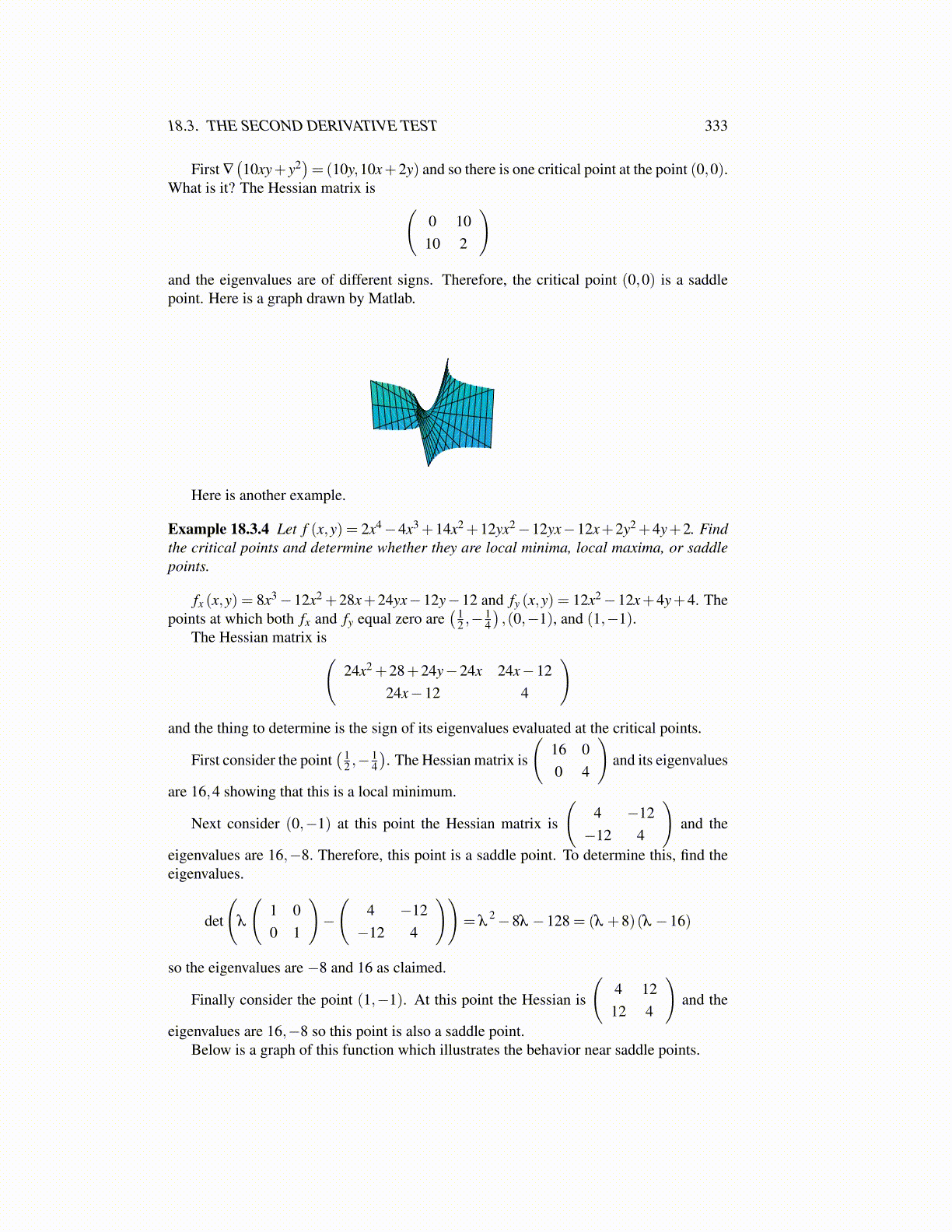
18.3. THE SECOND DERIVATIVE TEST 333
First ∇(10xy+ y2
)= (10y,10x+2y) and so there is one critical point at the point (0,0).
What is it? The Hessian matrix is (0 10
10 2
)
and the eigenvalues are of different signs. Therefore, the critical point (0,0) is a saddlepoint. Here is a graph drawn by Matlab.
Here is another example.
Example 18.3.4 Let f (x,y) = 2x4−4x3 +14x2 +12yx2−12yx−12x+2y2 +4y+2. Findthe critical points and determine whether they are local minima, local maxima, or saddlepoints.
fx (x,y) = 8x3−12x2 +28x+24yx−12y−12 and fy (x,y) = 12x2−12x+4y+4. Thepoints at which both fx and fy equal zero are
( 12 ,−
14
),(0,−1), and (1,−1).
The Hessian matrix is(24x2 +28+24y−24x 24x−12
24x−12 4
)
and the thing to determine is the sign of its eigenvalues evaluated at the critical points.
First consider the point( 1
2 ,−14
). The Hessian matrix is
(16 00 4
)and its eigenvalues
are 16,4 showing that this is a local minimum.
Next consider (0,−1) at this point the Hessian matrix is
(4 −12−12 4
)and the
eigenvalues are 16,−8. Therefore, this point is a saddle point. To determine this, find theeigenvalues.
det
(λ
(1 00 1
)−
(4 −12−12 4
))= λ
2−8λ −128 = (λ +8)(λ −16)
so the eigenvalues are −8 and 16 as claimed.
Finally consider the point (1,−1). At this point the Hessian is
(4 12
12 4
)and the
eigenvalues are 16,−8 so this point is also a saddle point.Below is a graph of this function which illustrates the behavior near saddle points.